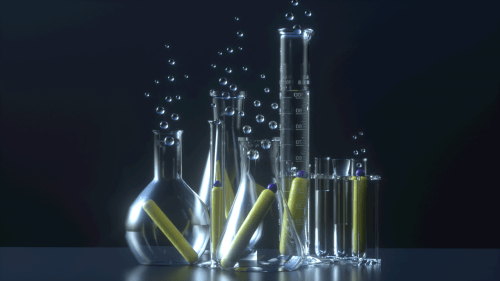Researchers at the Technion and the University of Bologna achieved a dramatic improvement in the utilization of solar energy to produce hydrogen and other products

For decades, hydrogen has been considered the fuel of the future, and this is because burning it only releases energy and water and does not pollute the environment. Today, most hydrogen is produced from natural gas in a polluting process, and one of the alternative processes for its production is photocatalysis: the splitting of water into hydrogen and oxygen using sunlight.
In the process of photocatalysis, sunlight is absorbed by semiconductor particles that produce positive and negative charges in response to the absorption of light. These electrical charges break down the water into hydrogen and oxygen; The negative charges extract hydrogen from the water, and the positive charges extract the oxygen. These two reactions, of the positive and negative charges, must occur simultaneously. Without utilizing the positive charges it is impossible to channel the negative charges to create hydrogen. Therefore, even though oxygen is not a necessary product, many efforts in the field of development of photocatalysis technologies have been devoted to achieving complete splitting of water into hydrogen and oxygen, without much success. Because of this, complete water splitting remains a significant challenge. Now, in an article published in the journal Nano Energy, a creative solution to this problem is presented.
The said research was led by Prof. Lilach Amirav from the Shulich Faculty of Chemistry with her colleagues at the University of Bologna in Italy. The process developed by the research group is based on unique particles developed by Prof. Amirav a few years ago. These particles demonstrate peak efficiency in utilizing light and negative charges to create hydrogen. Now the team presents a new approach to efficient utilization of the positive charges.
The team of researchers developed a process in which, alongside hydrogen, as an alternative to creating oxygen, useful products are also produced, including Benzaldehyde, which is used in the food, paint, plastic and cosmetic industries. The innovative process uses both the negative charges and the positive charges and thus utilizes the sun's energy in a more efficient and useful way. "You can say that we turned the process from photocatalysis to photosynthesis, that is, to a real conversion of solar energy into fuel," says Prof. Amirav. "Furthermore, the energy conversion efficiency of the process sets a new world record in the field of particle-based photocatalysis."
The peak efficiency achieved in the aforementioned study is 4.2% STC - double the previous record. This figure, which represents the efficiency of energy conversion from solar energy to chemical energy, is close to the goal defined by the US Department of Energy as a "practical feasibility threshold" for creating hydrogen through photocatalysis. The researchers estimate that this success is an important milestone towards expanding the use of photocatalysis processes as a means of industrial development and reducing environmental pollution.

4 תגובות
It will not remove water from the natural cycle, as soon as you burn hydrogen, you get water back... it's all a transformation of energy
I assume that the process uses distilled water, maybe even distilled water of a special purity level.
I wonder if in calculating the efficiency they also calculated the distillation process.
In a country like Israel that uses childcare, this is an additional cost.
It seems to me that when the hydrogen burns it combines with the oxygen and turns into water so that the amount of water remains the same.
will remove water forever from the natural cycle, sounds bad...